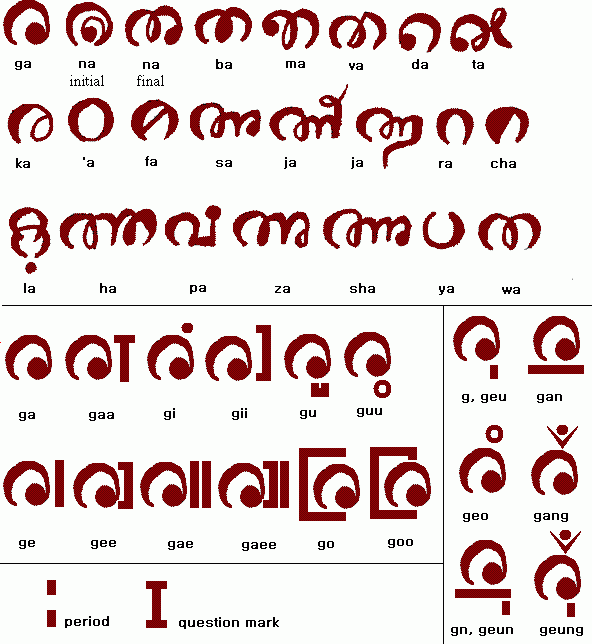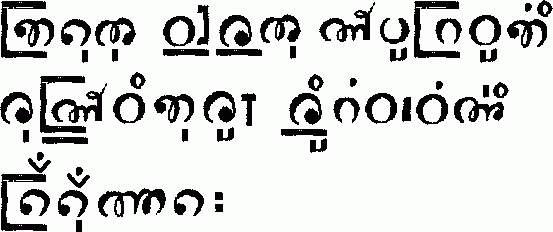Emoel gugu was invented by Bae Jun in 1999 to write his conlang, Emoel, which means curved or rounded, while gugu means script. It was inspired by the Tamil alphabet. He also intended to use it to write Korean, though never really did so.


Modeun ingan-eun tae-eonal ttaebuteo jayuroumyeo geu jon-eomgwa gwonrie iss-eo dongdeunghada.
All human beings are born free and equal in dignity and rights.
(part of Article 1 of the Universal Declaration of Human Rights)
If you have any questions about the Emoel gugu, you can contact Bae Jun at: shaxar@hanmail.net
Acrography, Byeokrando, Emoel gugu, Kara Hiragana, Korillic, Kovrit, Naljeogigeul (alphabetic), Naljeogigeul (syllabic), Seumul, T-8
Constructed scripts for: Ainu | Arabic | Chinese languages | Dutch | English | Hawaiian | Hungarian | Japanese | Korean | Lingala | Malay & Indonesian | Persian | Tagalog / Filipino | Russian | Sanskrit | Spanish | Taino | Turkish | Vietnamese | Welsh | Other natural languages | Colour-based scripts | Tactile scripts | Phonetic/universal scripts | Constructed scripts for constructed languages | Adaptations of existing alphabets | Fictional alphabets | Magical alphabets | A-Z index | How to submit a constructed script
[top]
You can support this site by Buying Me A Coffee, and if you like what you see on this page, you can use the buttons below to share it with people you know.

If you like this site and find it useful, you can support it by making a donation via PayPal or Patreon, or by contributing in other ways. Omniglot is how I make my living.
Note: all links on this site to Amazon.com, Amazon.co.uk
and Amazon.fr
are affiliate links. This means I earn a commission if you click on any of them and buy something. So by clicking on these links you can help to support this site.
[top]